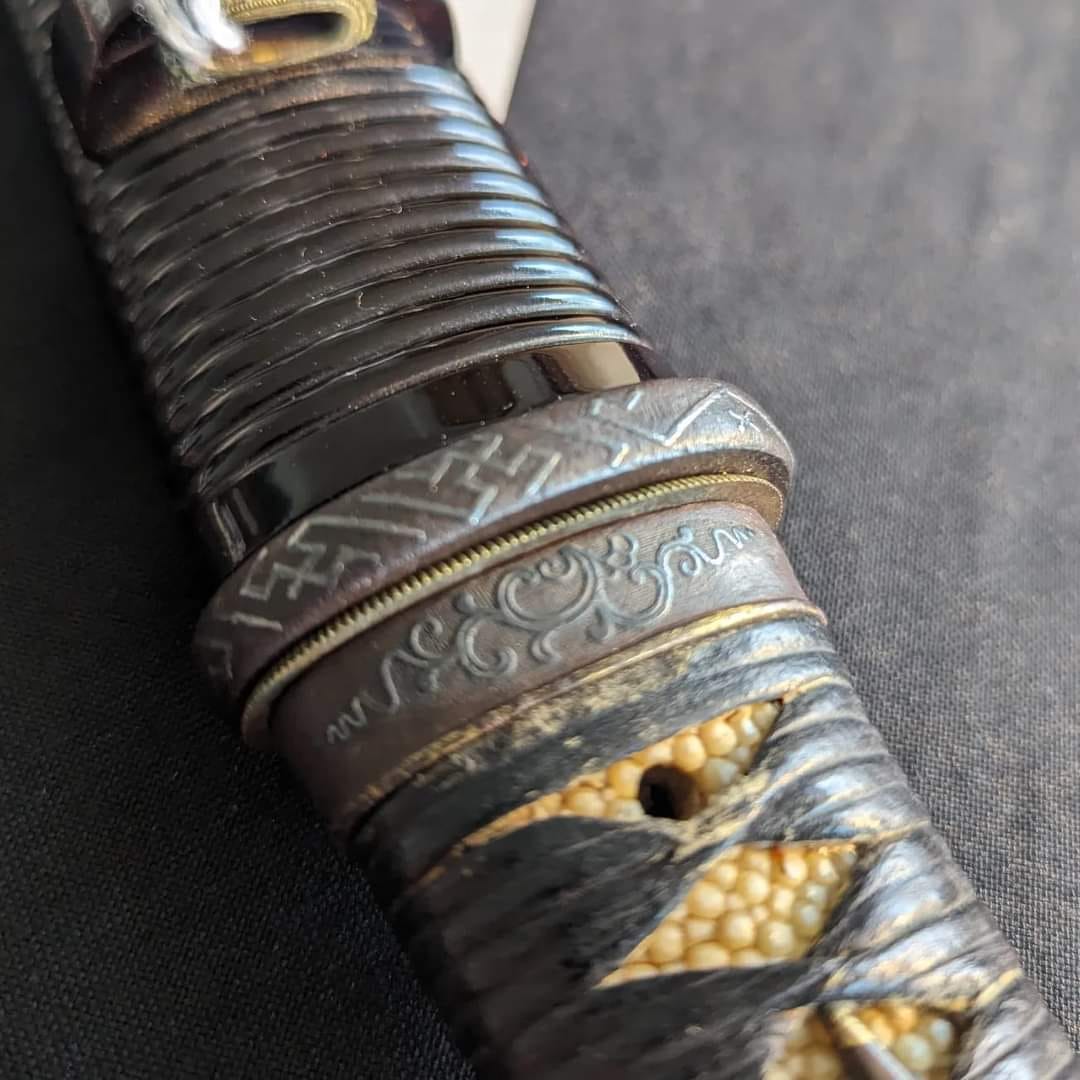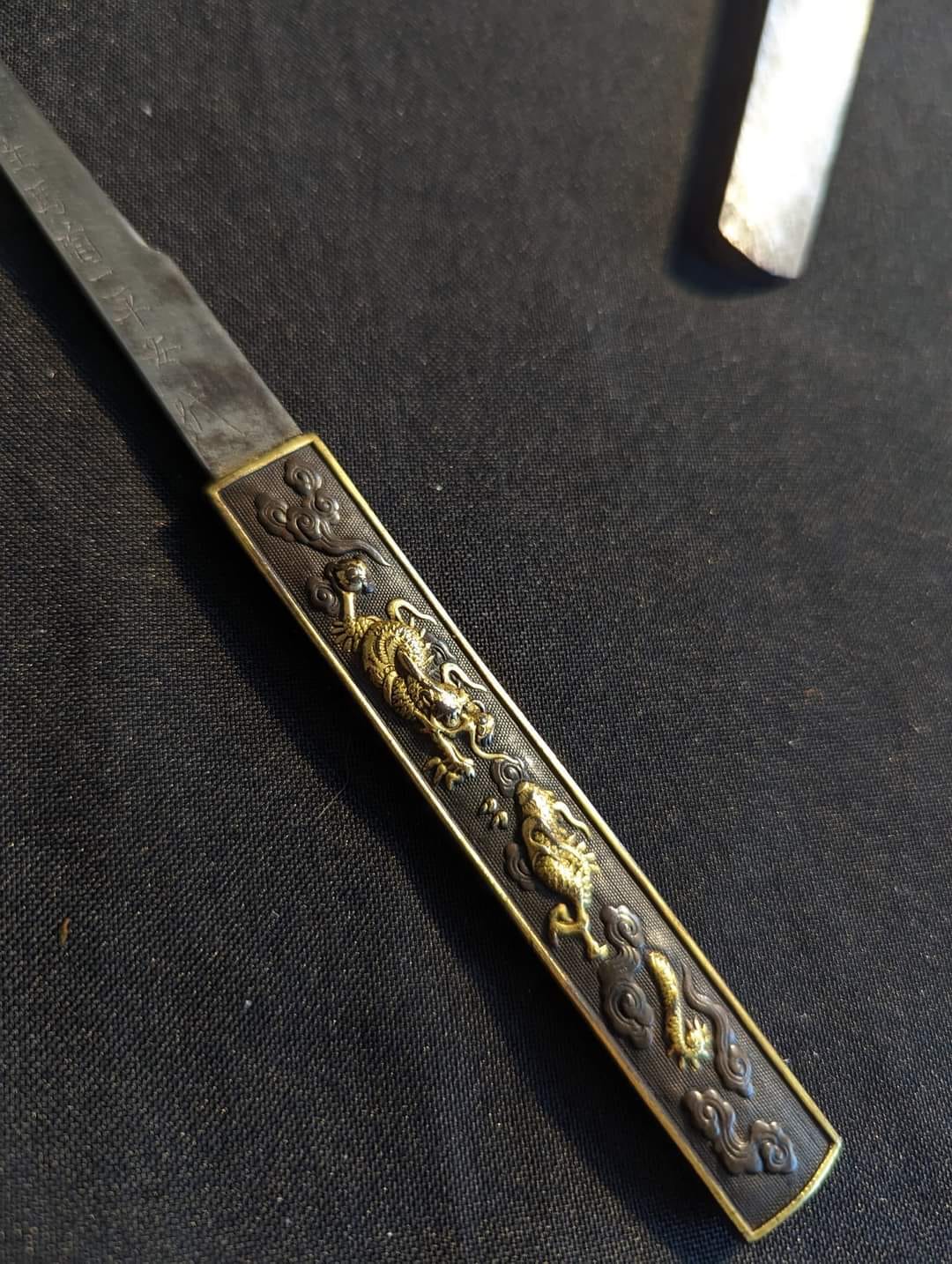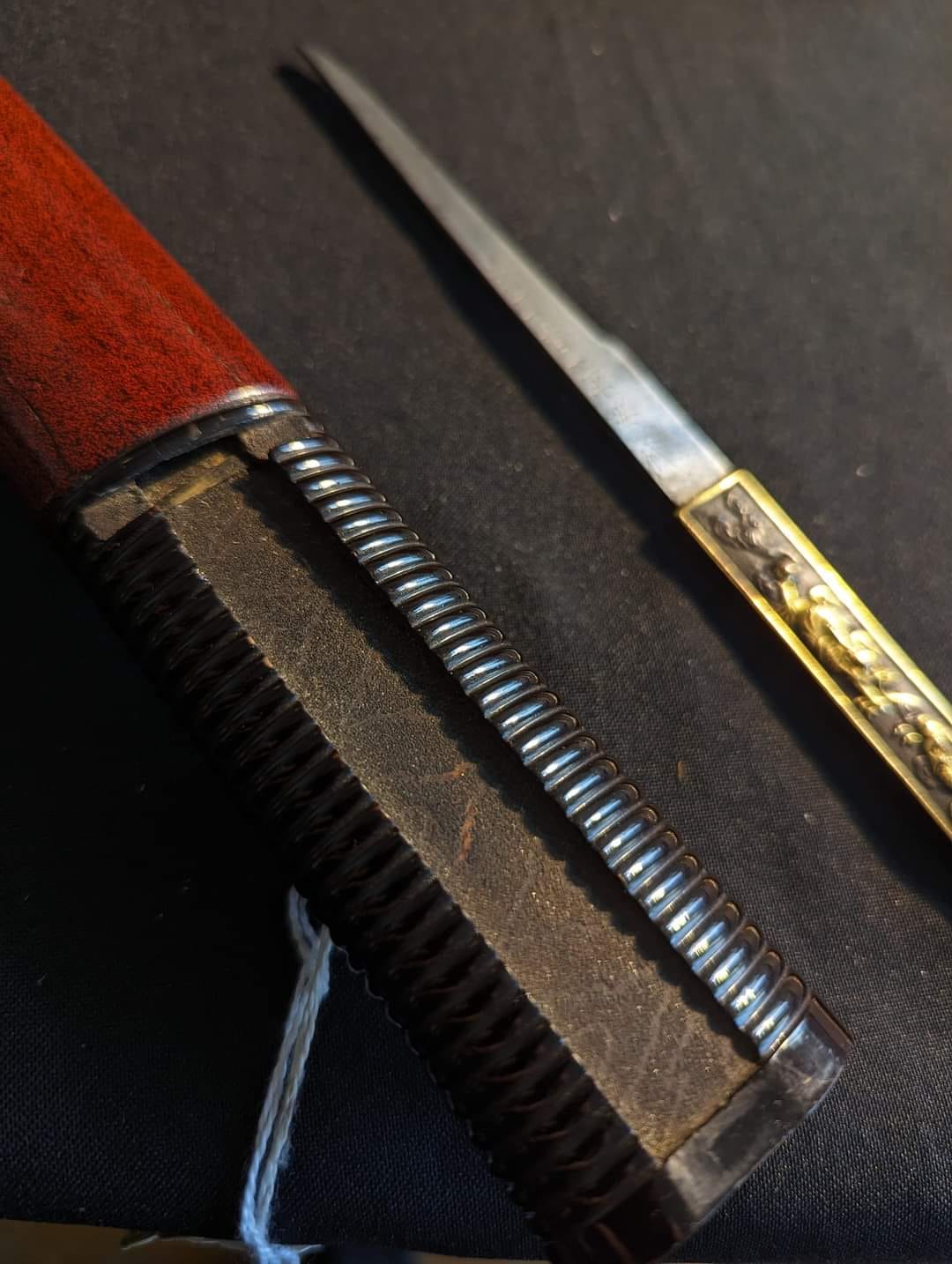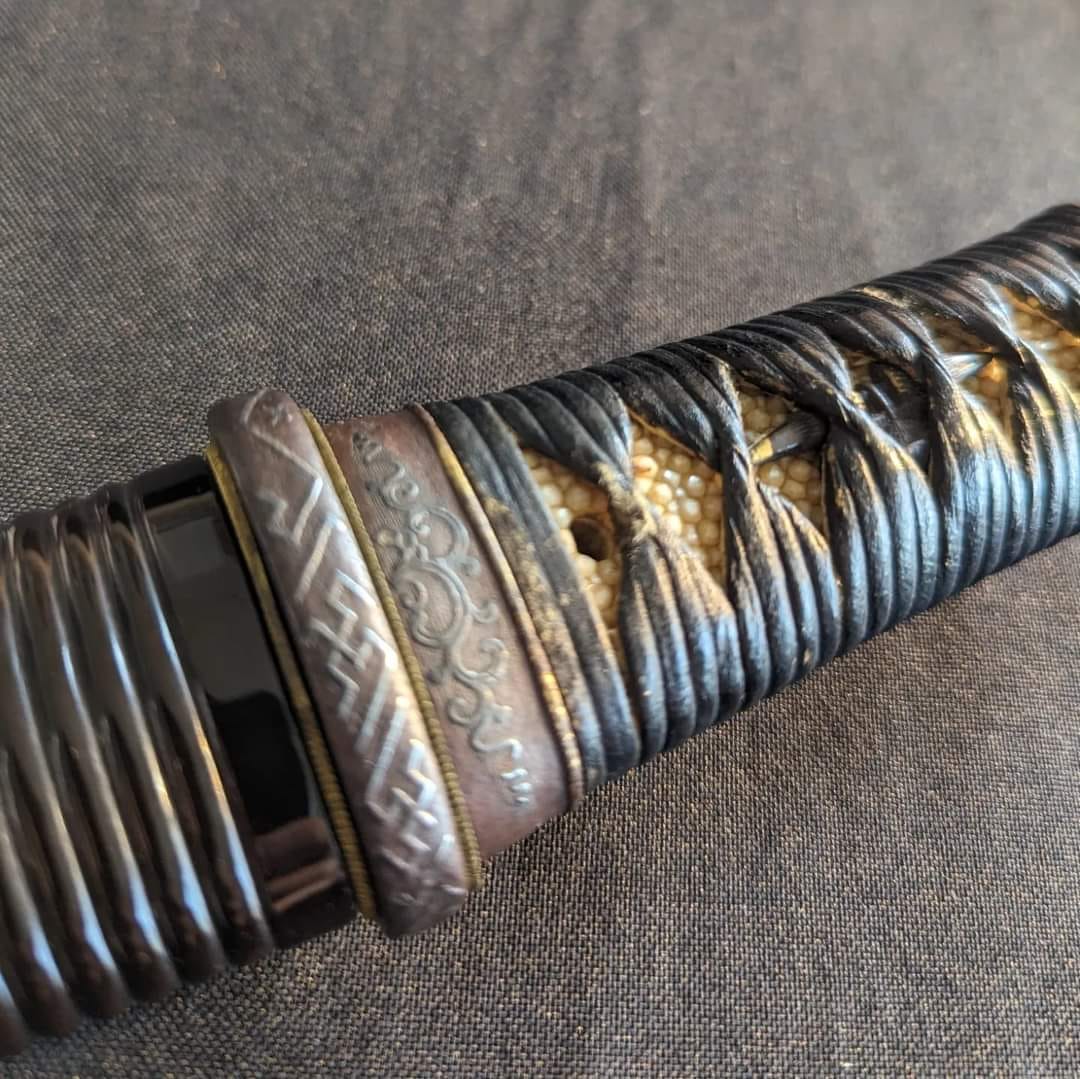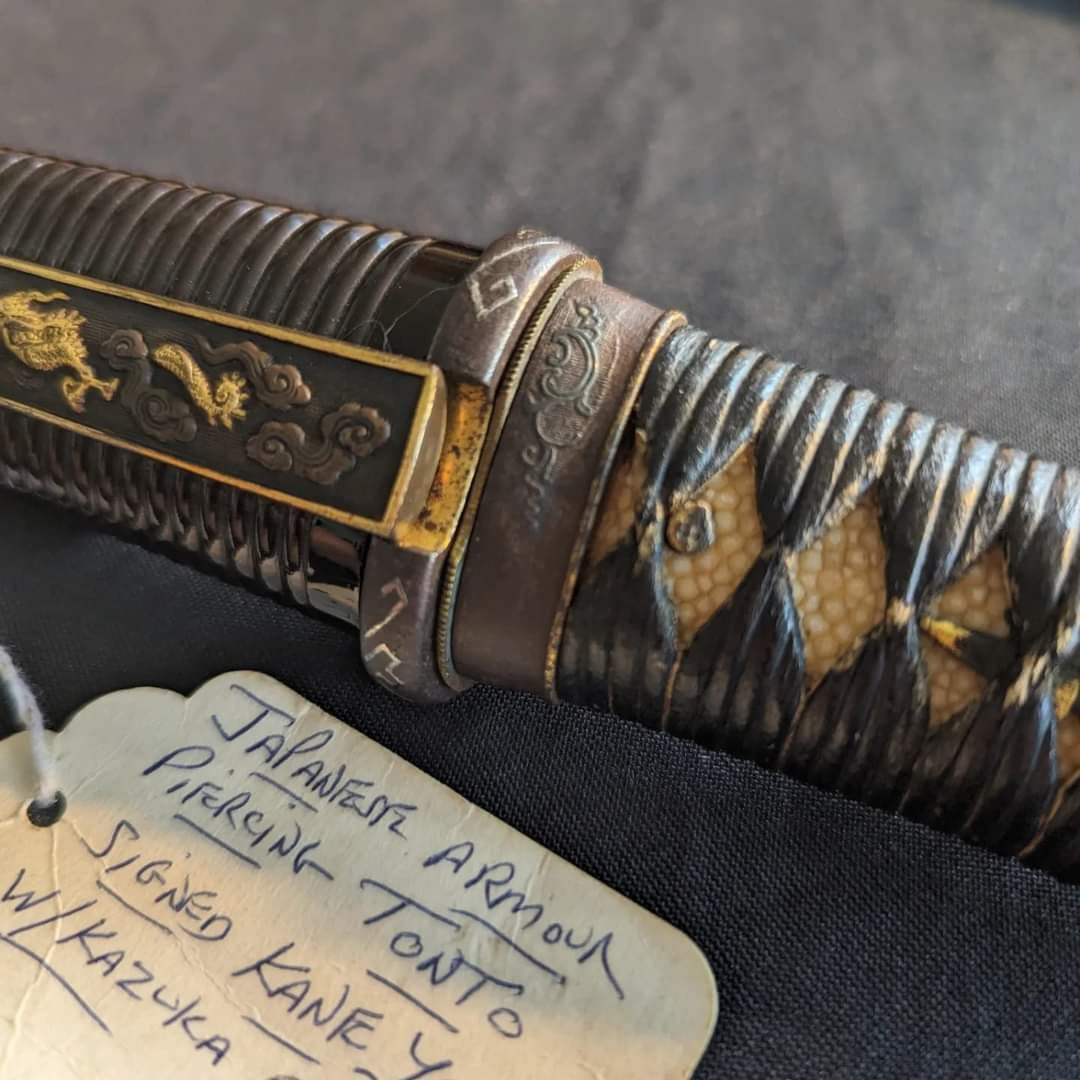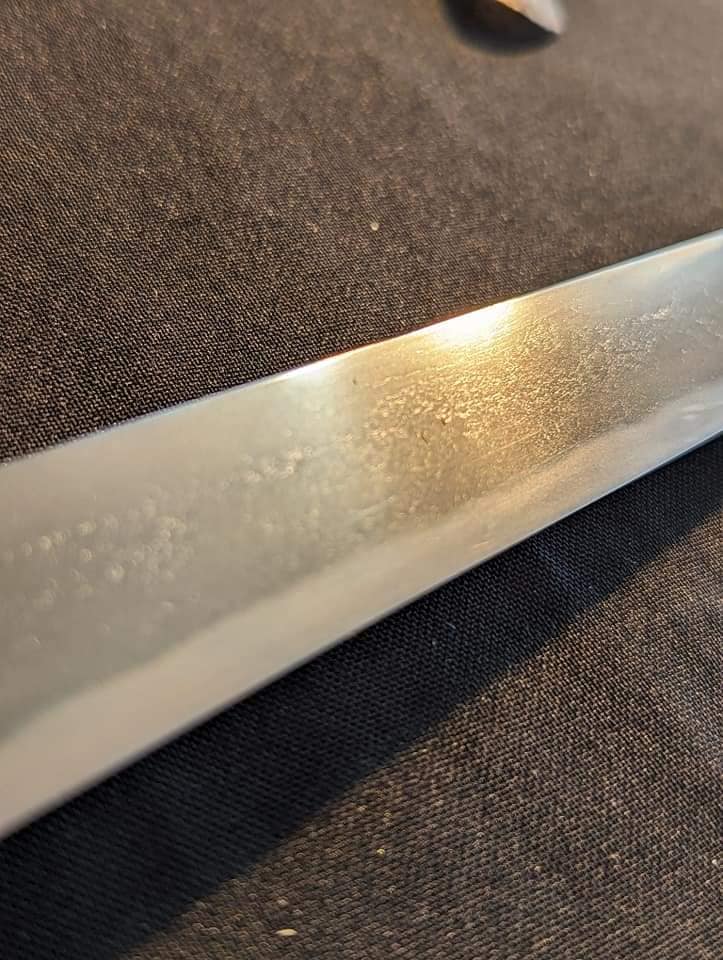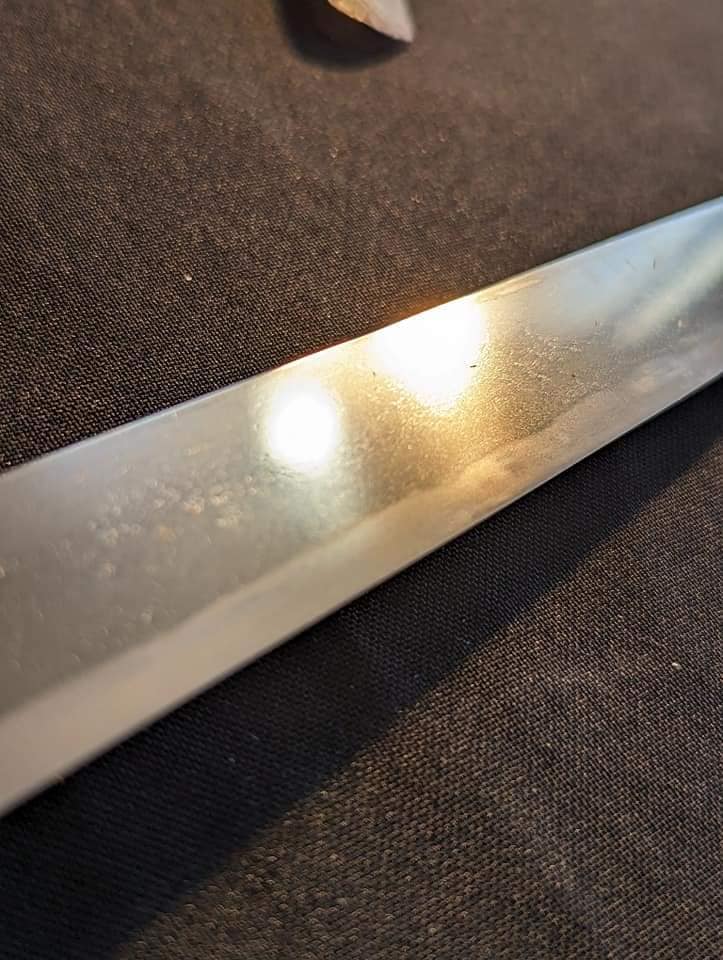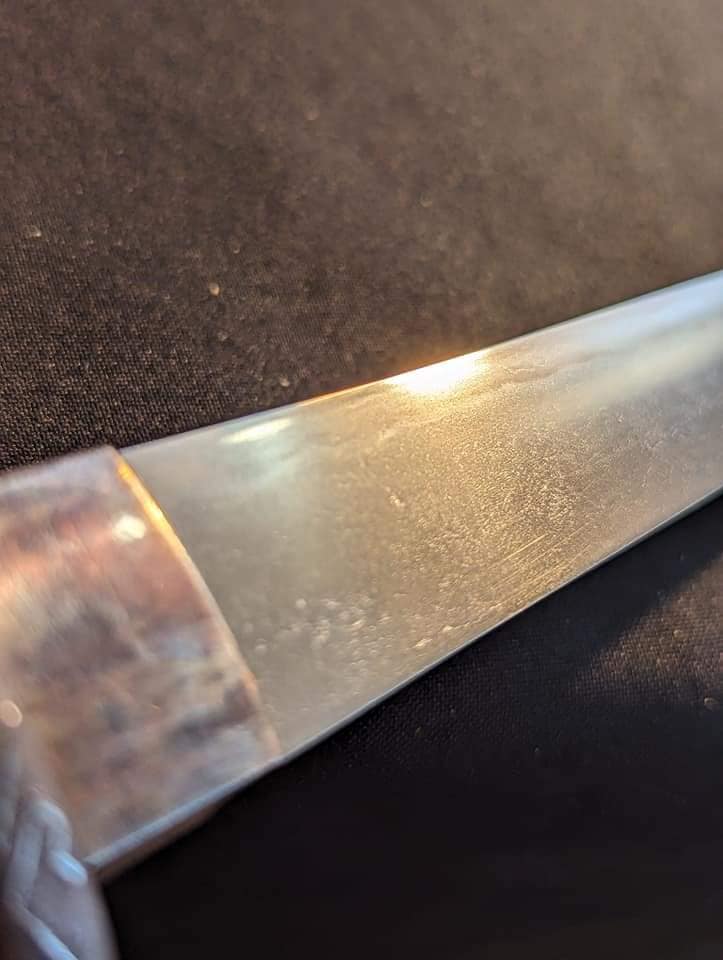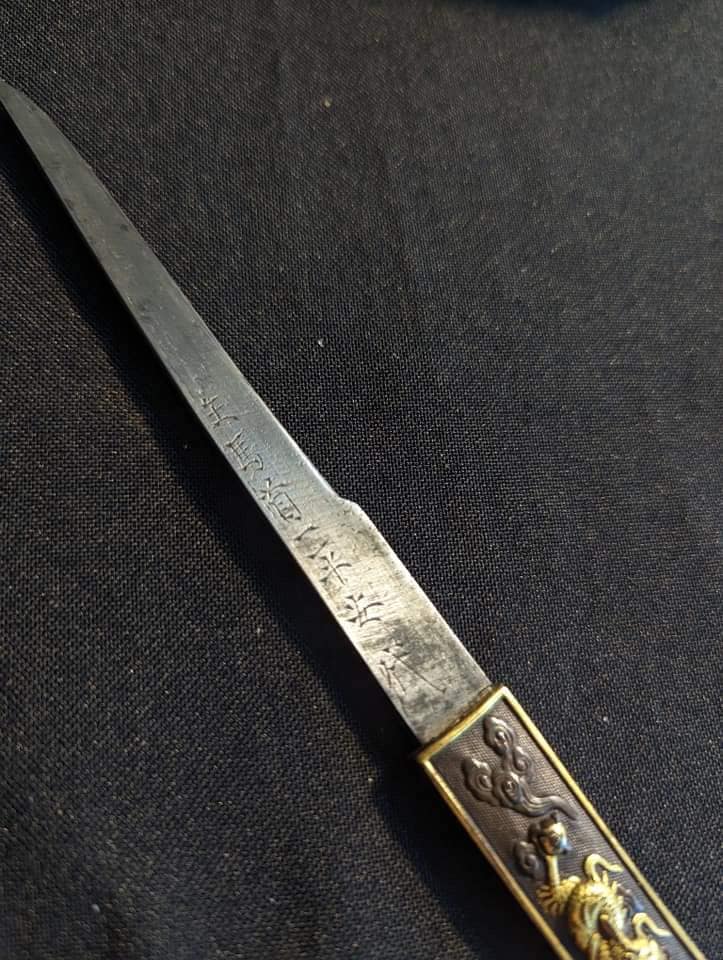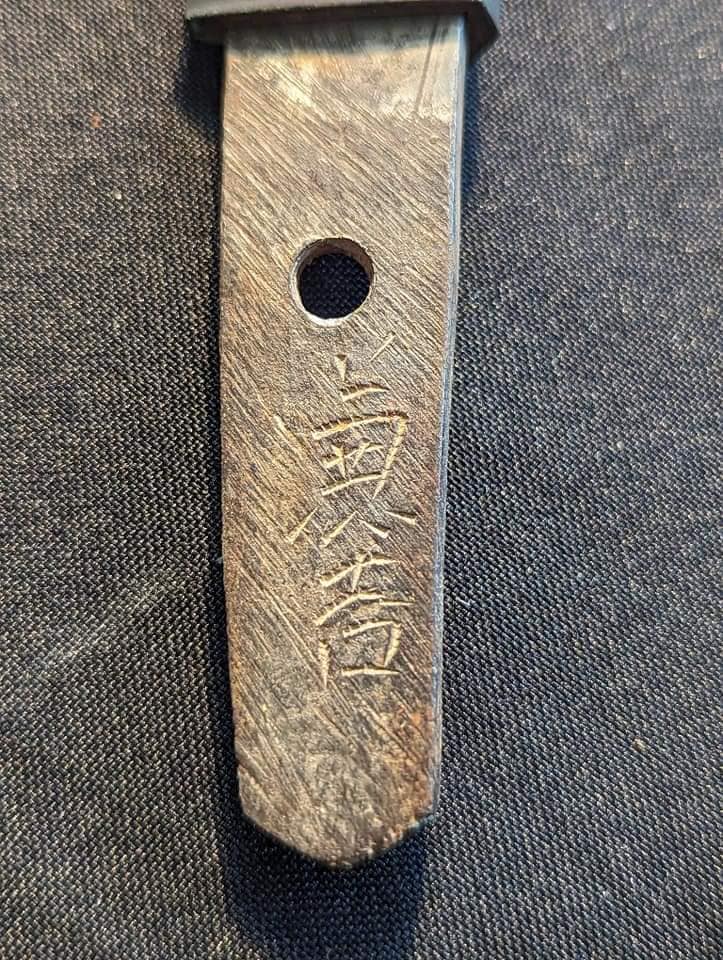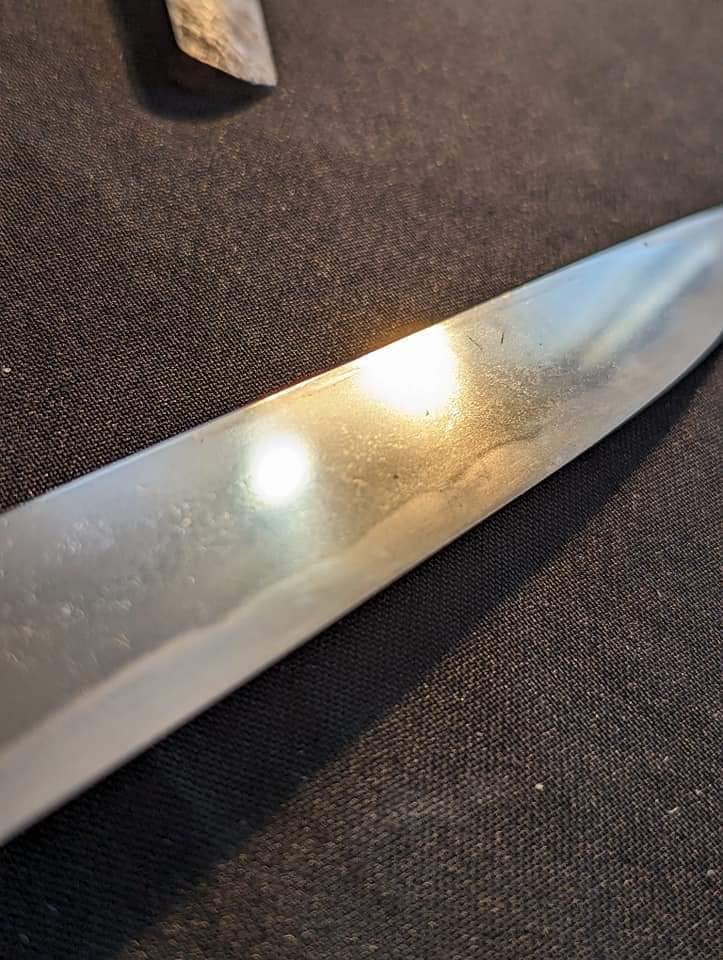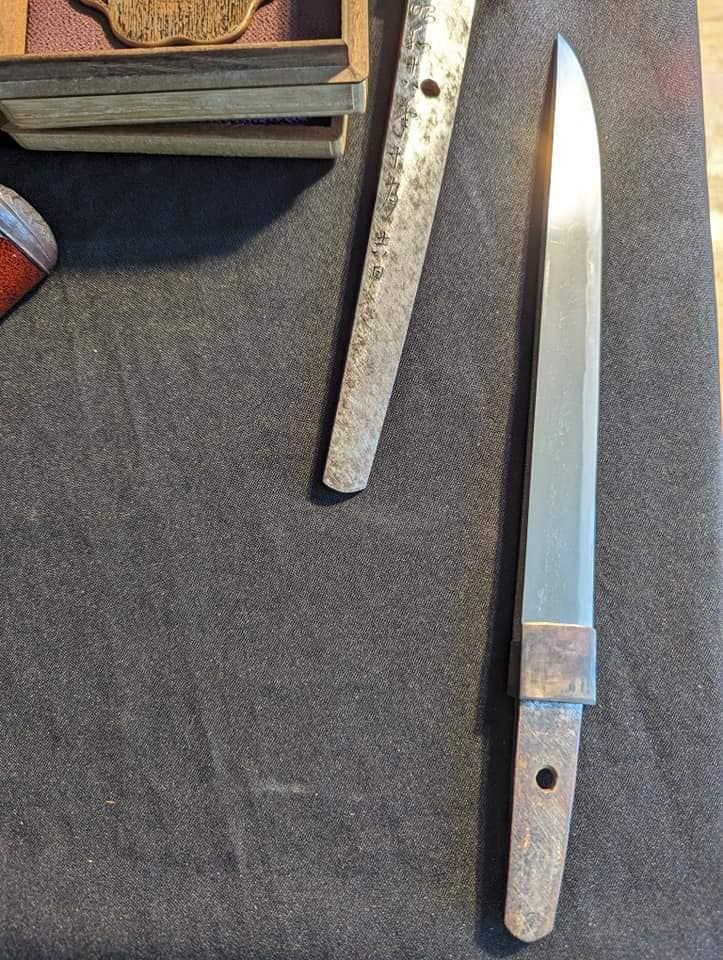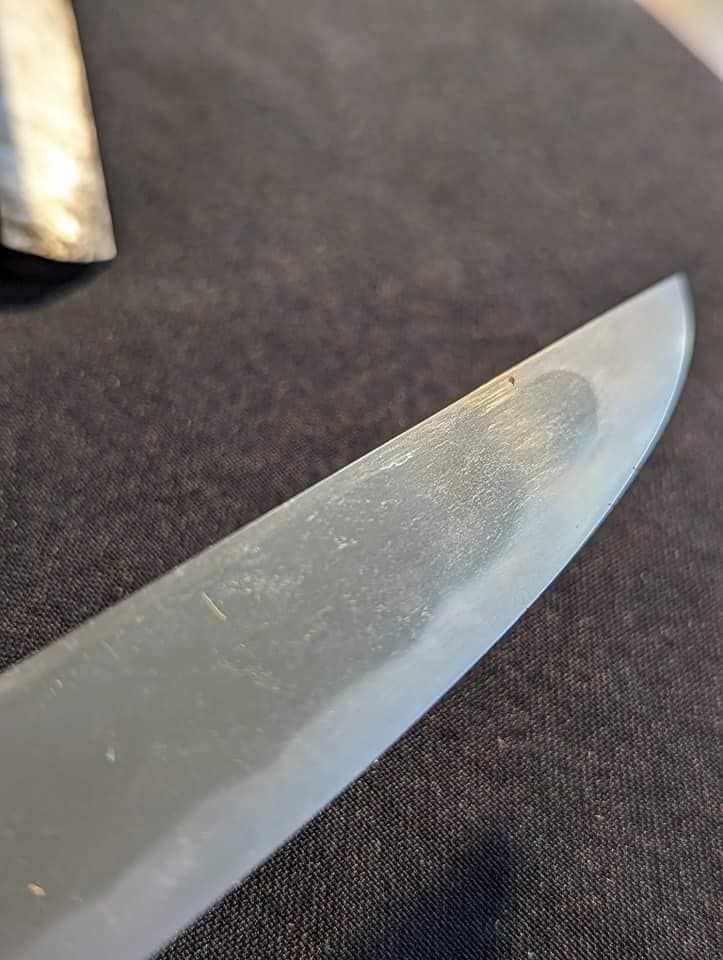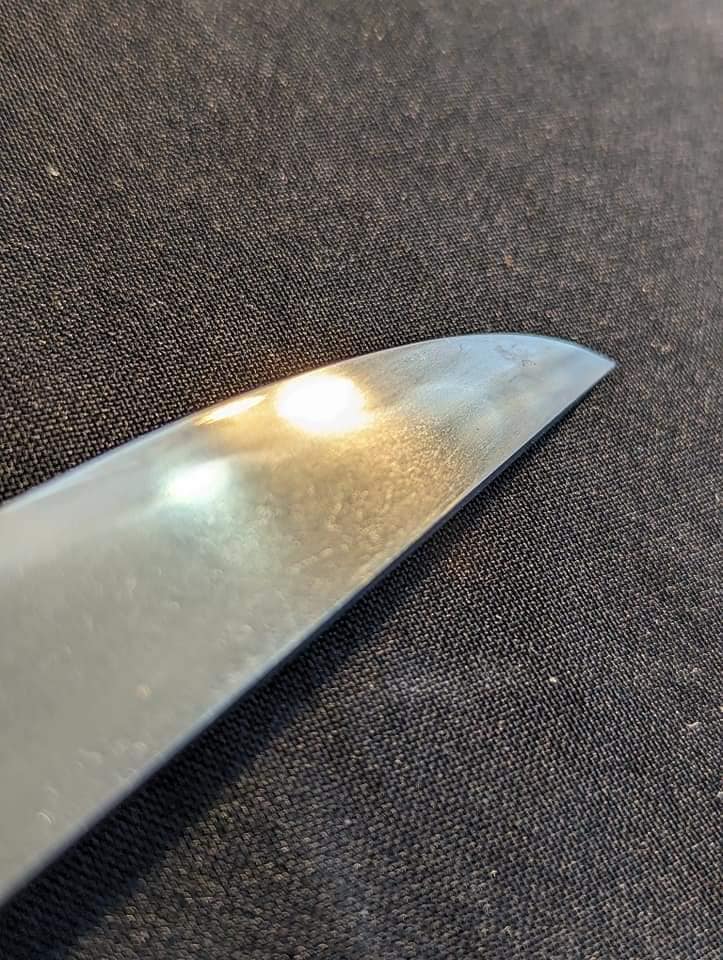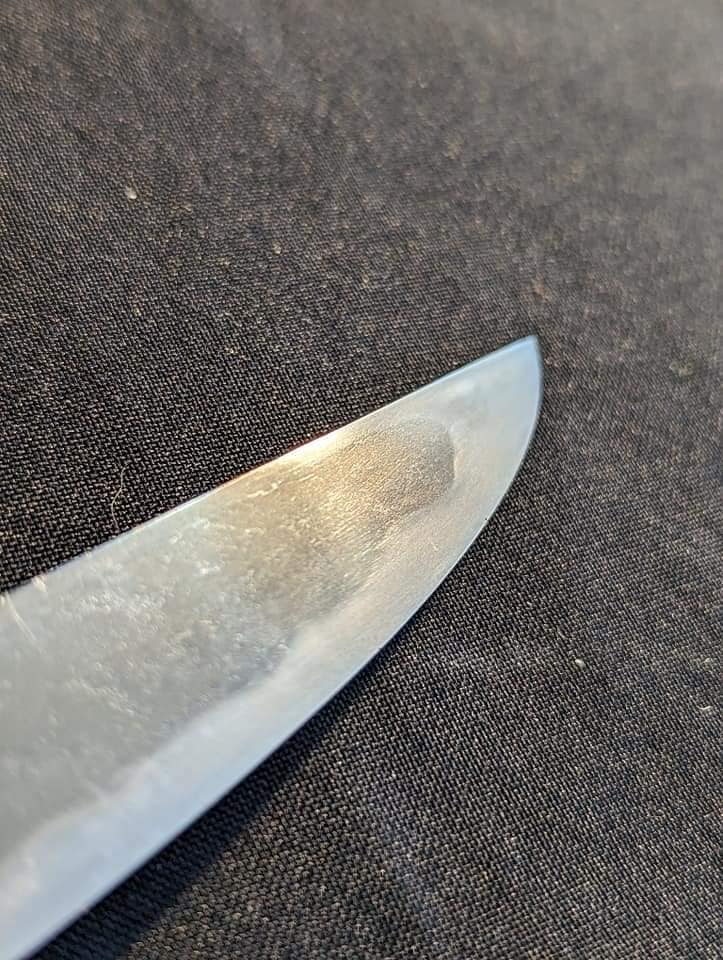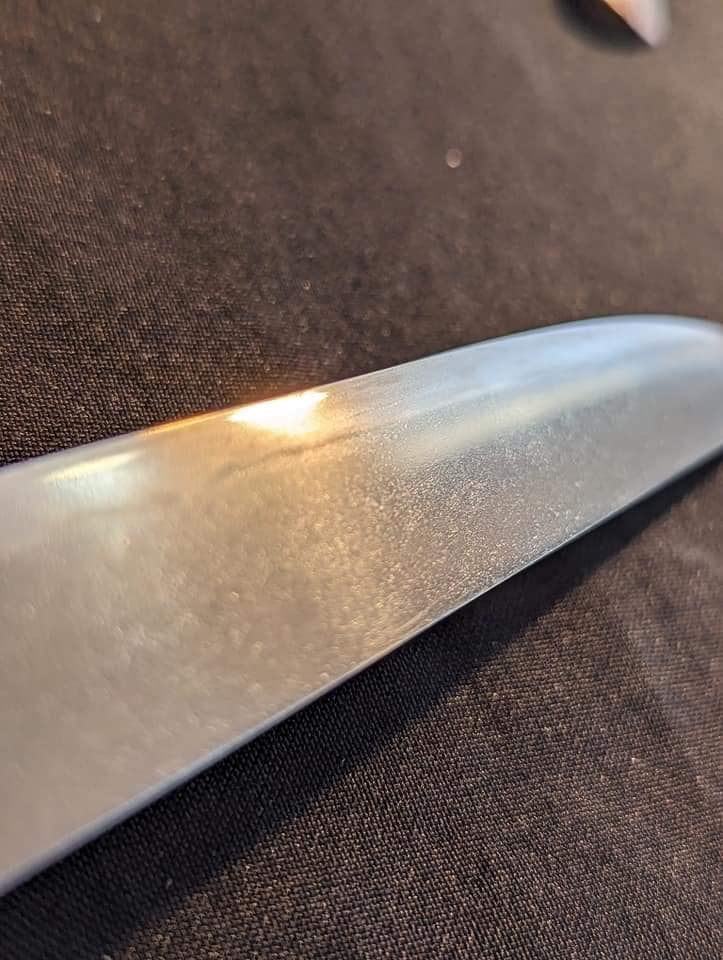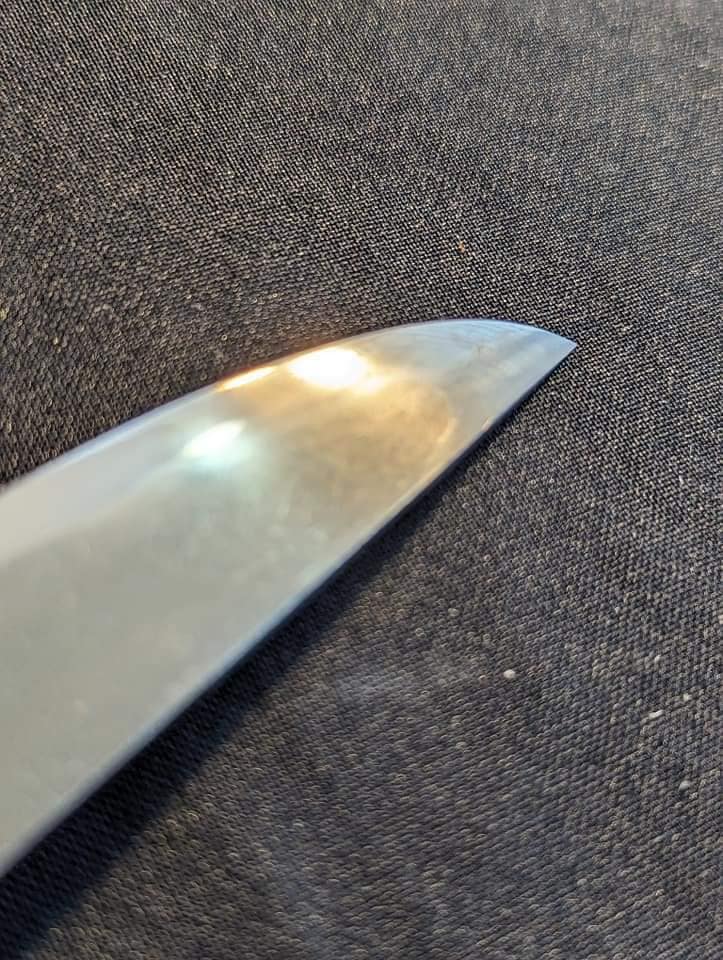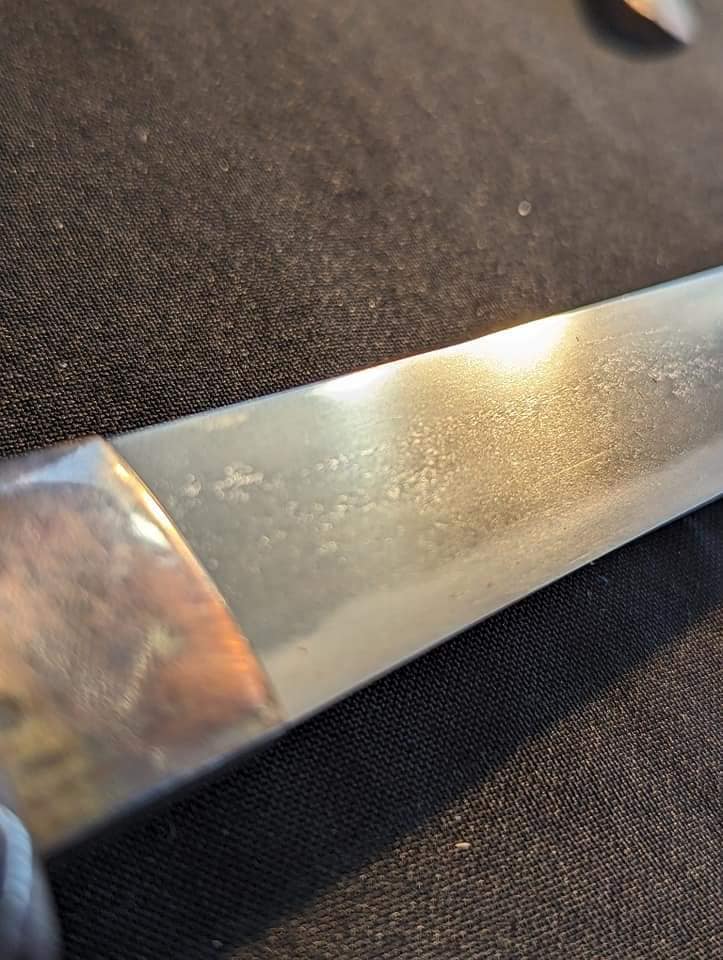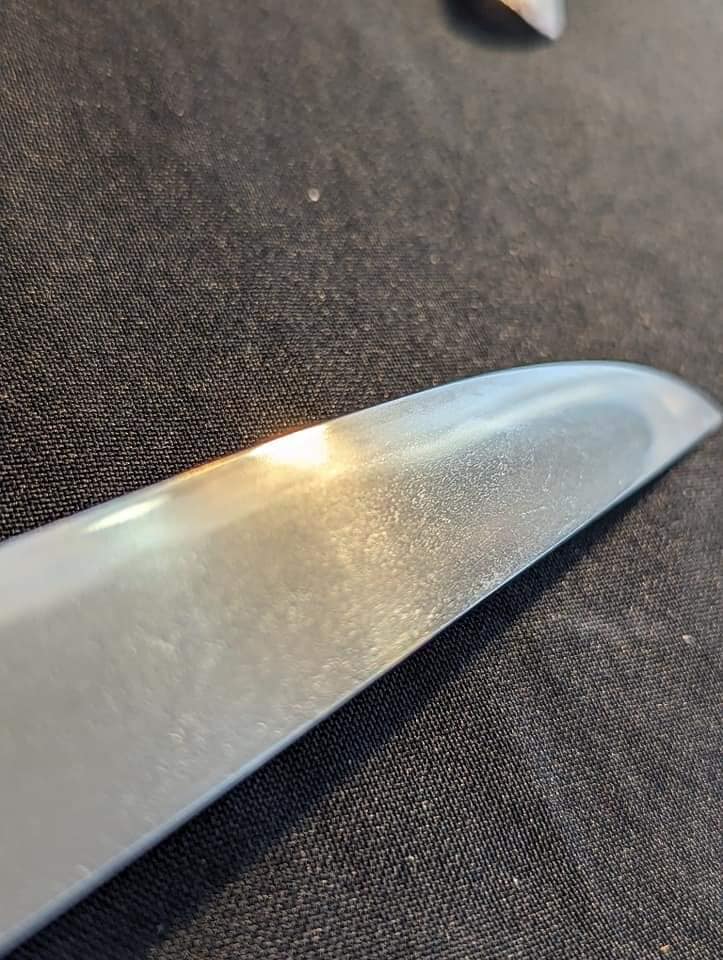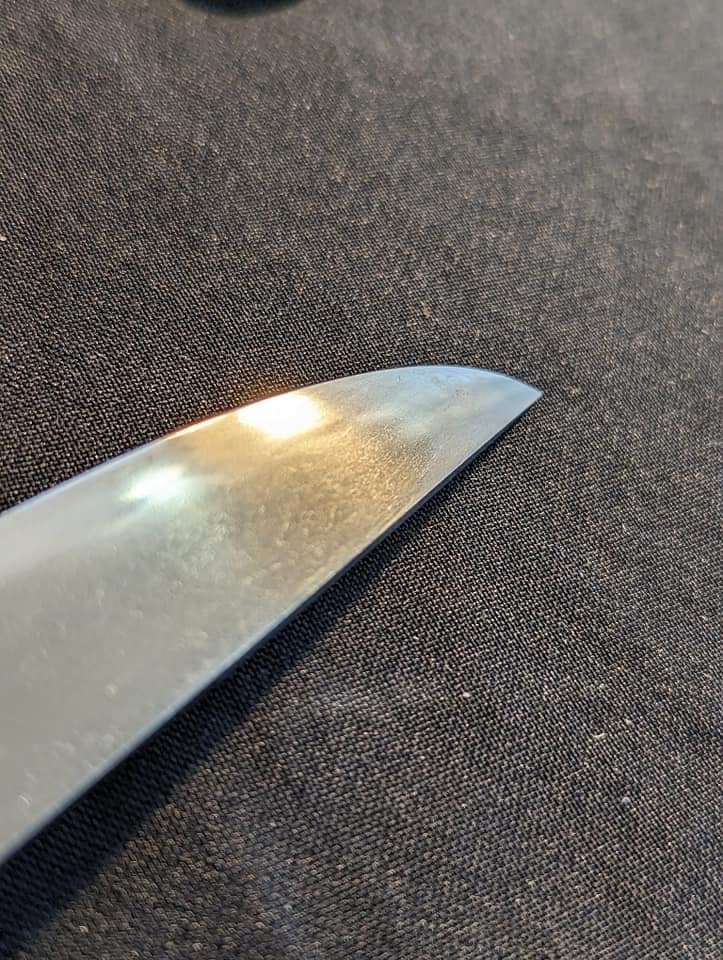KANEYOSHI (兼吉), Meiji (明治, 1868-1912), Mino – “Seki Kaneyoshi” (関兼吉), “Seki-jūnin Kaneyoshi saku” (関住人兼吉作), “Nōshū Seki-jū Shinseishi Zenjō Kaneyoshi saku” (濃州関住真勢子善定兼吉作), “Seki Zenjō Kaneyoshi saku” (関善定兼吉作), “Zenjō Fujiwara Kaneyoshi saku” (善定藤原兼吉作), real name Kosaka Kanejirō (小坂兼次郎, his first name also reads Kenjirō), he changed his first name later to Kinbei (金兵衛) and with his 60th birthday his smith name to Michitaka (道孝), gō Shinseishi (真勢子), he was born in the second month of Tenpō eight (天保, 1837) as son of the Zenjō-smith Tahei Kaneyoshi (太兵衛兼吉) in Seki, when his father died in the third year of Kaei (嘉永, 1850), the then 14-years old Kaneyoshi entered an apprenticeship at his uncle Tomizō Kaneyoshi (富蔵兼吉), in Ansei three (安政, 1856), he went to Edo where he studied two years under Iwano Michitoshi (岩野道利), a smith who worked for the Mutsu Nanbu family (南部), he returned to Seki in Ansei five (1858) to succeed as head of the family, in the first year of Meiji (1868) he was invited by Umemura Hayami (梅村速水, 1842-1870), the governor of the Hida-Takayama fief (飛騨高山藩), to forge for him in the field camp at Takayama, in Meiji two (1869) he returned to Seki and with the first ban on wearing swords issued September 23rd 1871 – the sanbatsu-dattō-rei (散髪脱刀令) and precursor of the later haitō-rei (廃刀令) – he changed his profession and sold from that time onwards cutlery, with the Japanese-Chinese War from 1894-95 and the Russo-Japanese War from 1904-05, he worked again as a swordsmith, in 1907 he founded the Seki-based training site Tōken Tanren Jo (刀剣鍛錬所), he died November 3rd 1914, ko-itame mixed with masame, mostly he applied the Zenjō-typical suguha but some few blades show also a nie-laden gunome or ō-midare

